
Coulée Verte René–Dumont
The Tree-Lined Walkway
The Coulée Verte René–Dumont is an elevated linear park in Paris. It's in the 12th arrondissement, starting near Place de la Bastille. It leads from there to the southeast for 4.7 kilometers, ending at the Boulevard Périphérique, the inner ring road around the city. The park is on abandoned railway infrastructure, the old Vincennes railway line. A section of it is elevated 10 meters or more above street level.
It's also known as the Promenade plantée or Tree-lined Walkway, or simply as the Coulée Verte or Green Way. It opened as a park in 1993.
Amazon
ASIN: 0241306078
To Our Walk Along the Coulée Verte René–Dumont
Budget HotelsI was staying at a cheap hotel along Rue de Rivoli, back when there were cheap hotels along the Rue de Rivoli. Let's get breakfast at a café and then make our way east to the Place de la Bastille, and onto the walkway.
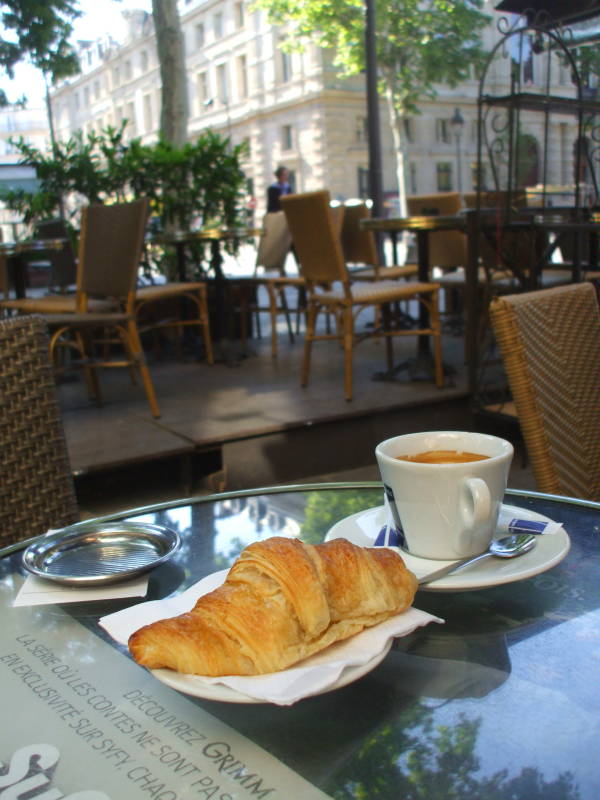
Rue de Rivoli turns into Rue Saint-Antoine, and that leads into Place de la Bastille. The Bastille fortress had been built in the late 1300s as part of the defenses of Paris. Then Cardinal Richelieu, King Louis XIII's chief minister, converted the Bastille into a prison in the 17th century.
Amazon
ASIN: B0091X4AP8
Amazon
ASIN: B00D7VH3CC
The Bastille's reputation became worse and worse as it was used to imprison political and religious prisoners labeled as "seditious" and thus a threat to the state. The people of Paris stormed the Bastille on 14 July 1789, hence the national holiday of Bastille Day. Within a year, nothing remained of the fortress. Two years later, its former location was an open square now celebrating liberty.
So, in the 1850s Place de la Bastille was a good place to build a train station.
The private company Société de Chemin de Fer Paris—Strasbourg was contracted in 1853 to build a train line from Place de la Bastille in Paris to Marles-en-Brie, a little over 66 kilometers away. It would run across the 12th arrondissement, pass through Vincennes, and then through Veneuil–l'Étang.
The Vincennes line operated from 1859 to 1969. It was one of the last French lines to operate steam locomotives.
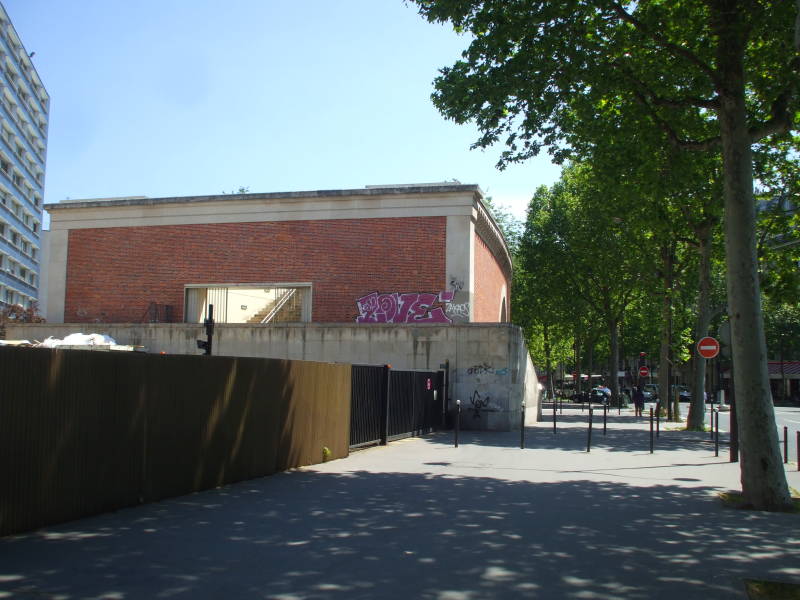
The front of the old Paris-Bastille Station used to be on the south side of Place de la Bastille.
Leave that large and busy traffic circle to the south, on Rue de Lyon. Continue for about 300 meters. The west end of the Coulée Verte will be on your left, where Avenue Daumesnil branches off Rue de Lyon.
Above, we're looking at the west end of the Coulée Vert. This is where the elevated rail lines left the station on this viaduct. It doesn't look like much. But go up the staircase onto the end of the green parkway.
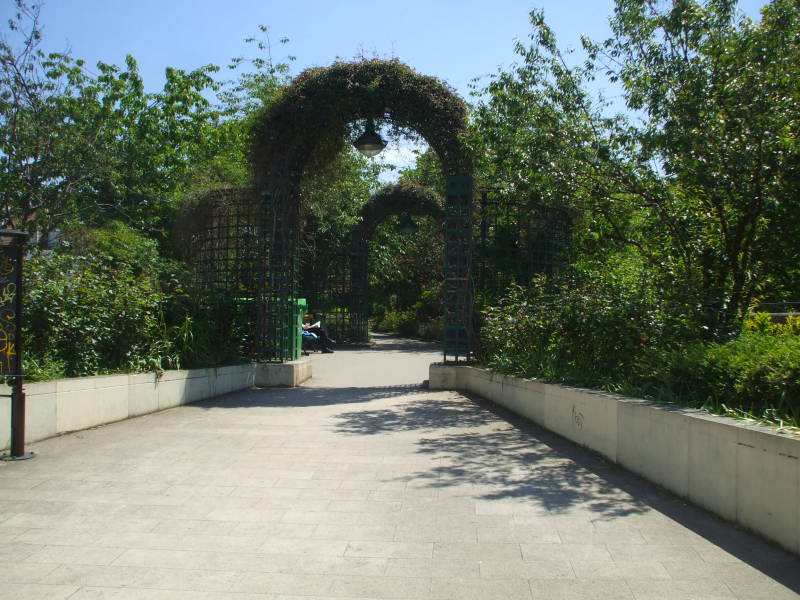
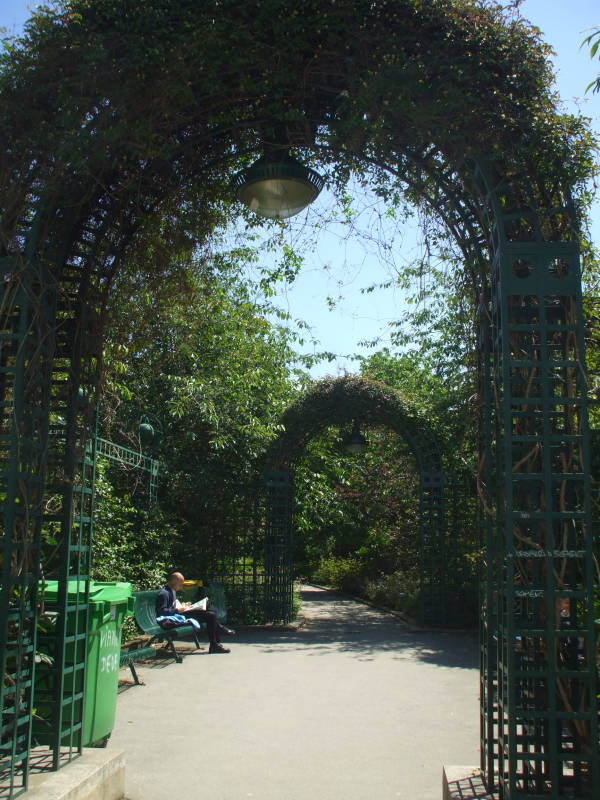
The rail line was disassembled soon after it ceased operation at the end of 1969. Part of it was updated, electrified, and integrated into line A of the RER.
But that was the part further out from the center. The RER line from Bastille to Vincennes was built new starting in 1969, running entirely underground.
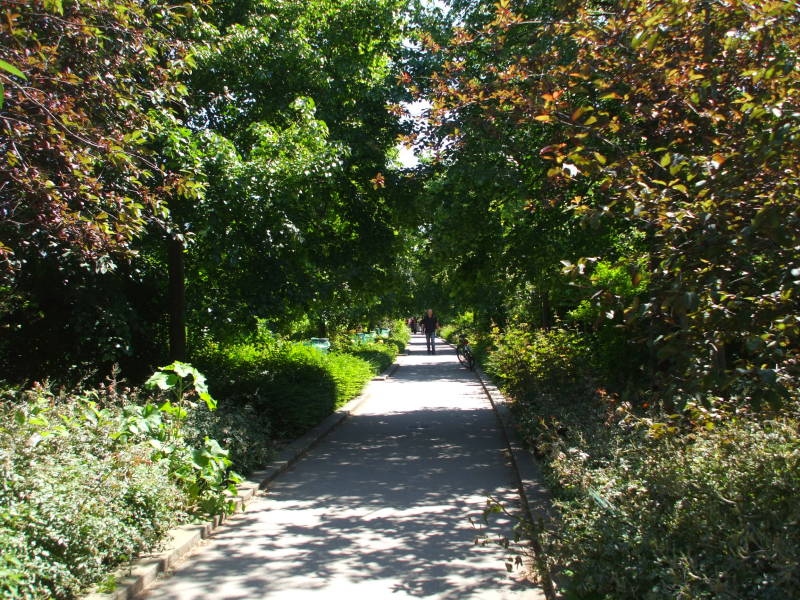
After the Paris—Vincennes rail line was retired in 1969, the Bastille station remained in use for art exhibitions.
Amazon
ASIN: 024125616X
Amazon
ASIN: B07NYCK5G1
The area started undergoing renovation in the 1980s. The Bastille station was demolished in 1984, to make room for the Opéra Bastille.
Work on the Coulée Verte started then. It was to run from what had been the track end of the station, following the old rail line to where it passed through the old Montempoivre gate into the city.

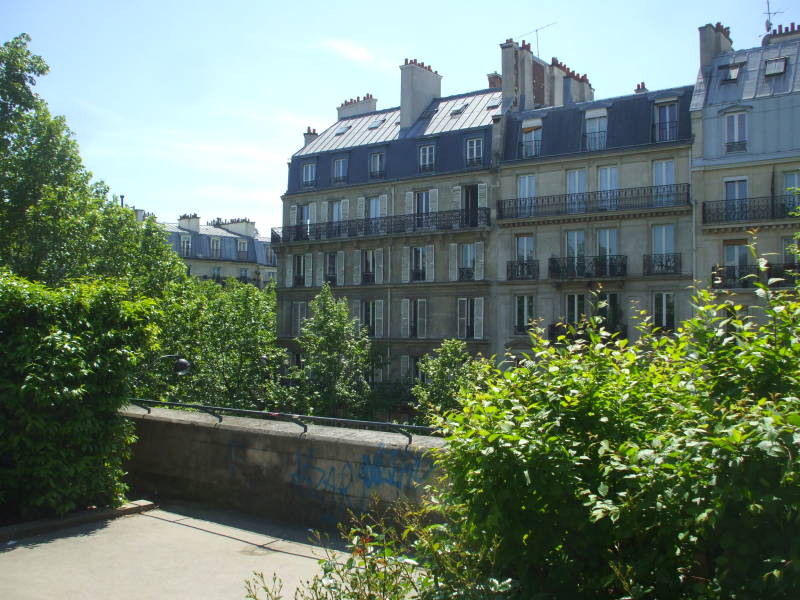
The initial kilometer of the line out of the station, 1,020 meters. was carried on a viaduct with 72 brick arches. This put the rail line, and today's park, at the level of the first or second floor above street level. Some of the buildings were very close to the rail viaduct, and thus to the park.
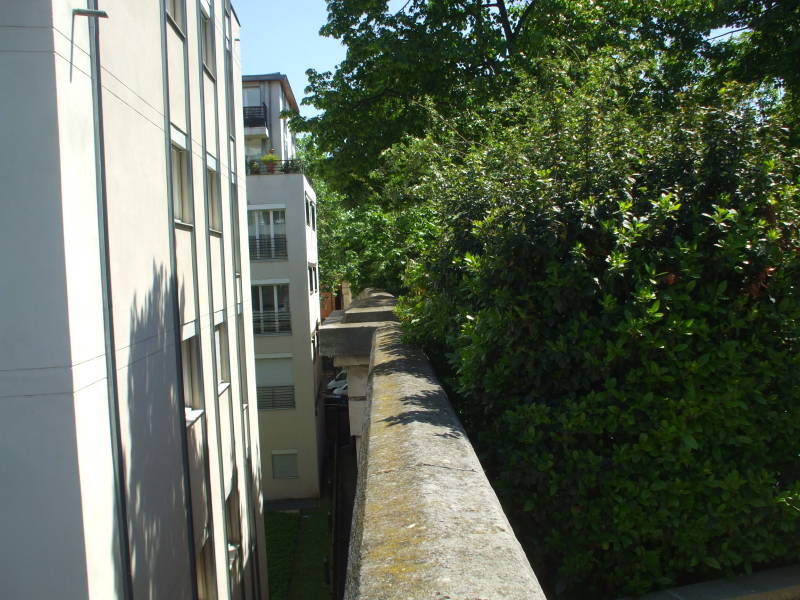
The Coulée Verte opened as a park in 1993.


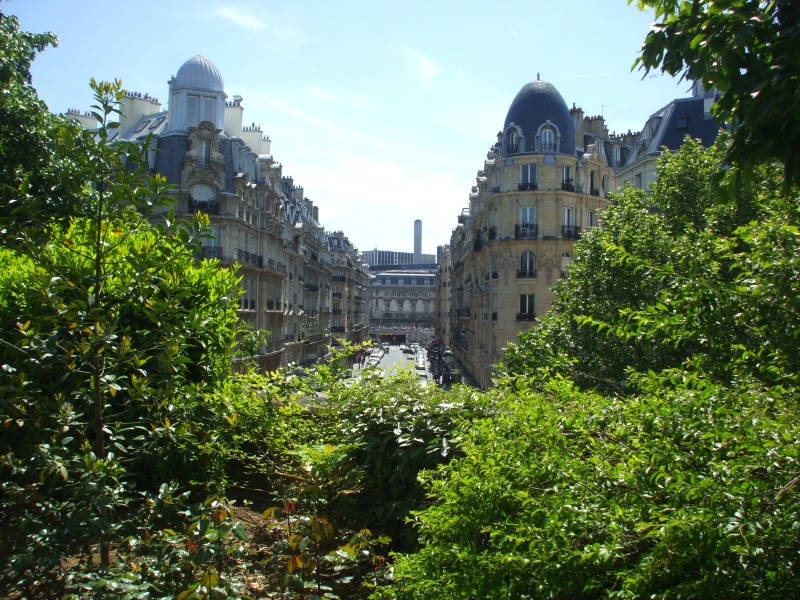
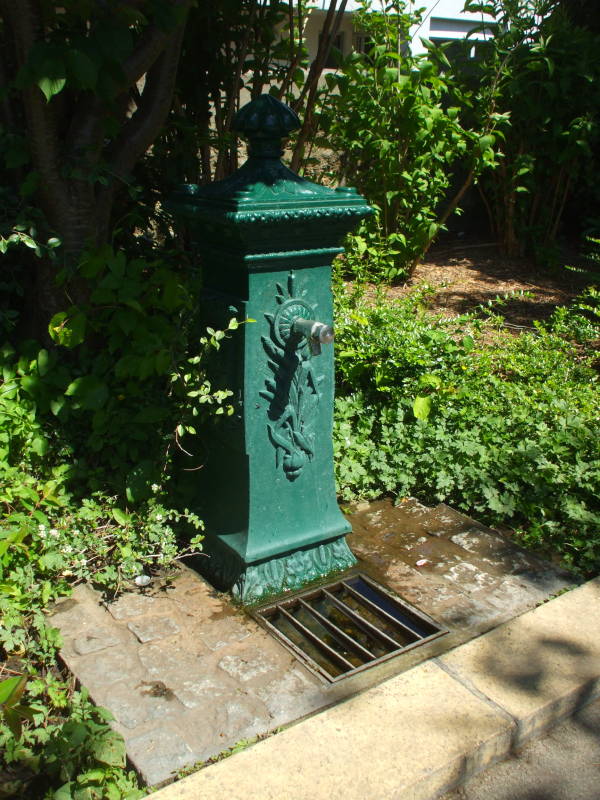
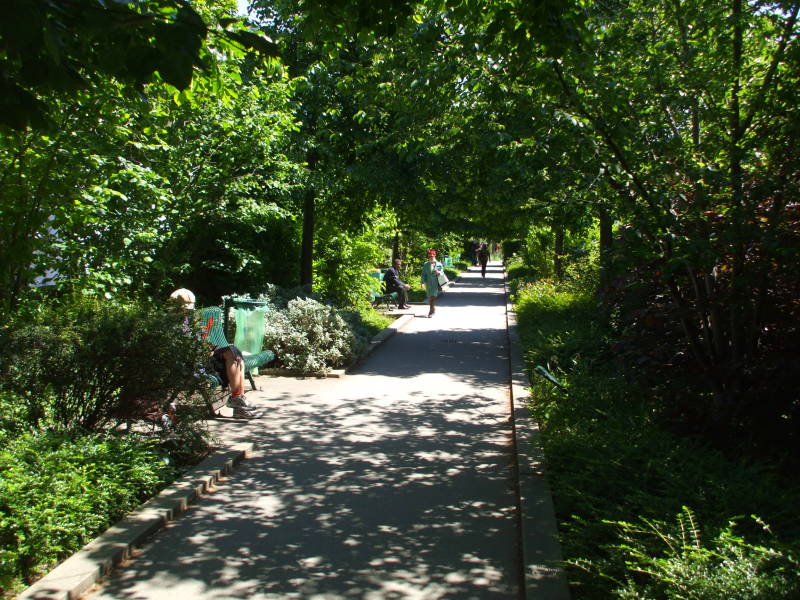


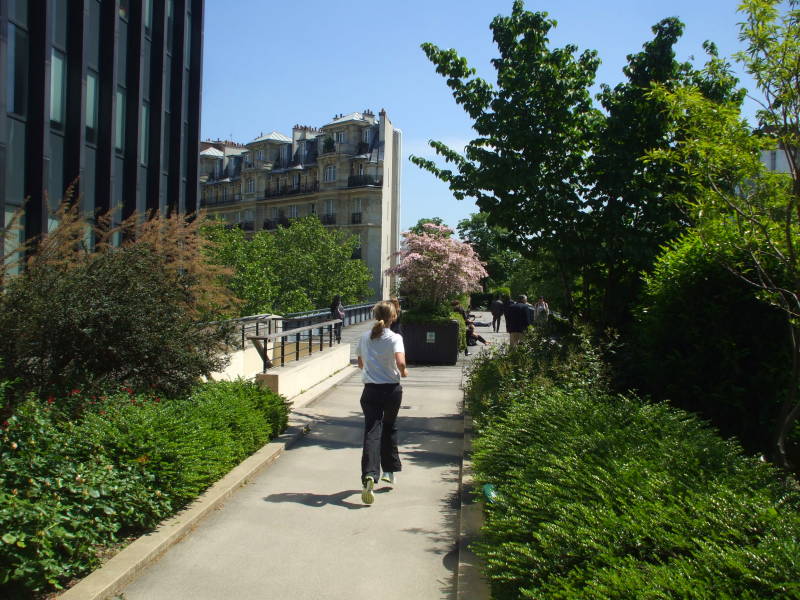
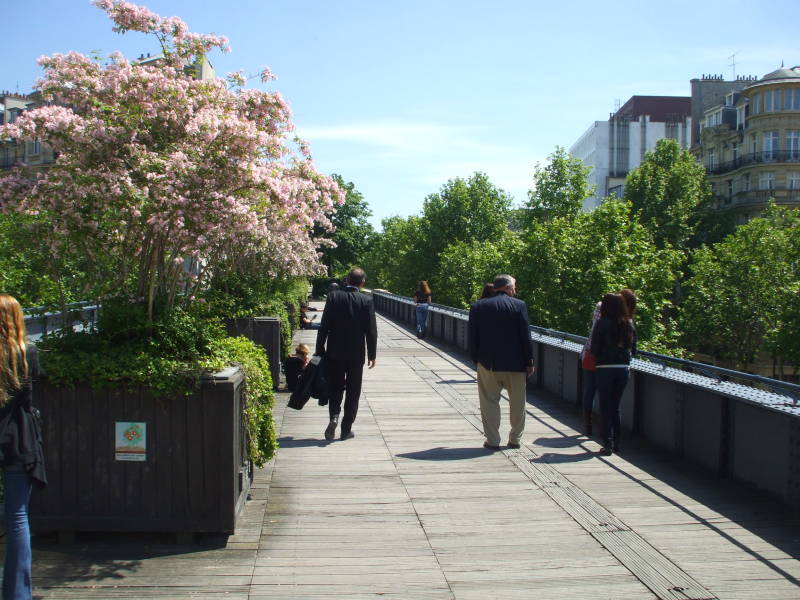
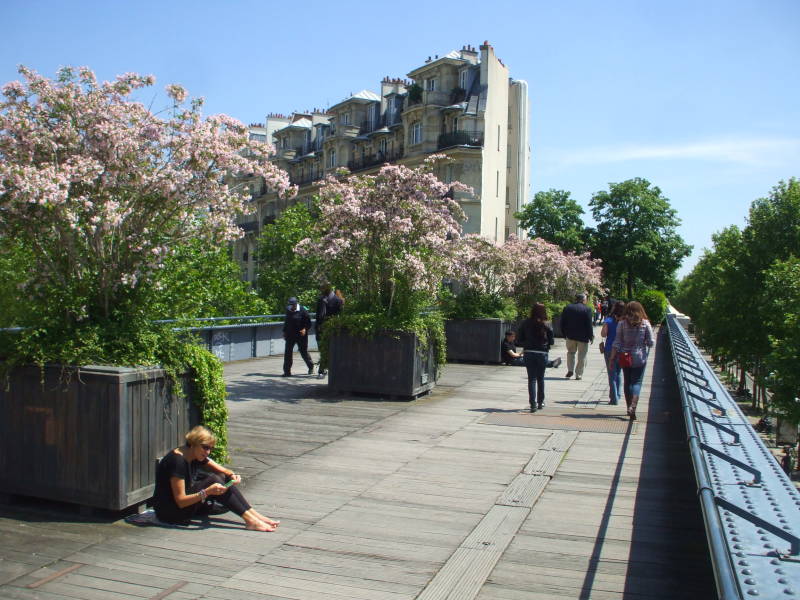
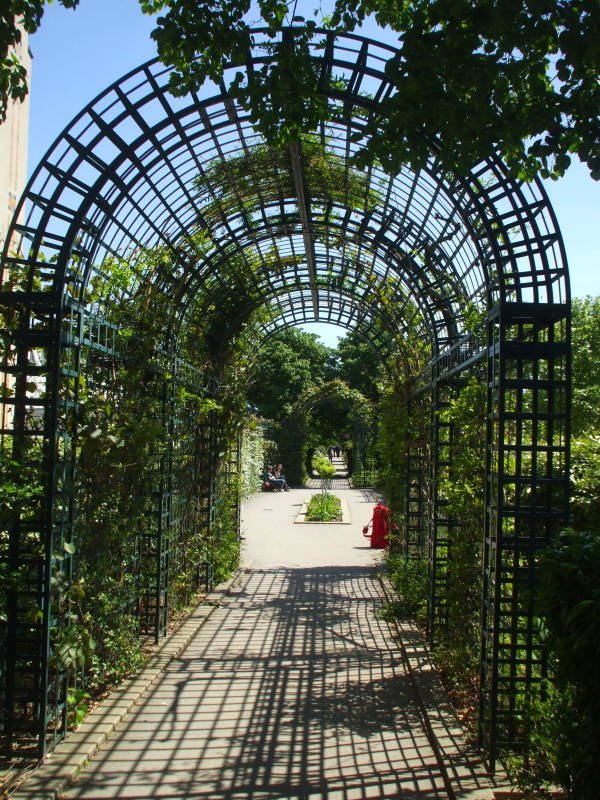
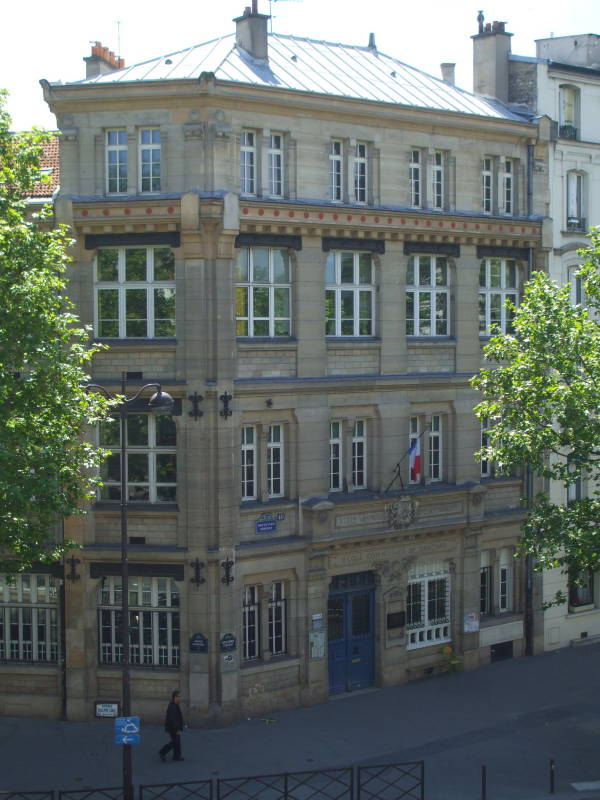
Viaduc des Arts
Above, we're looking down at a school. We'll go down to street level here and visit the area of the Viaduc des Arts.
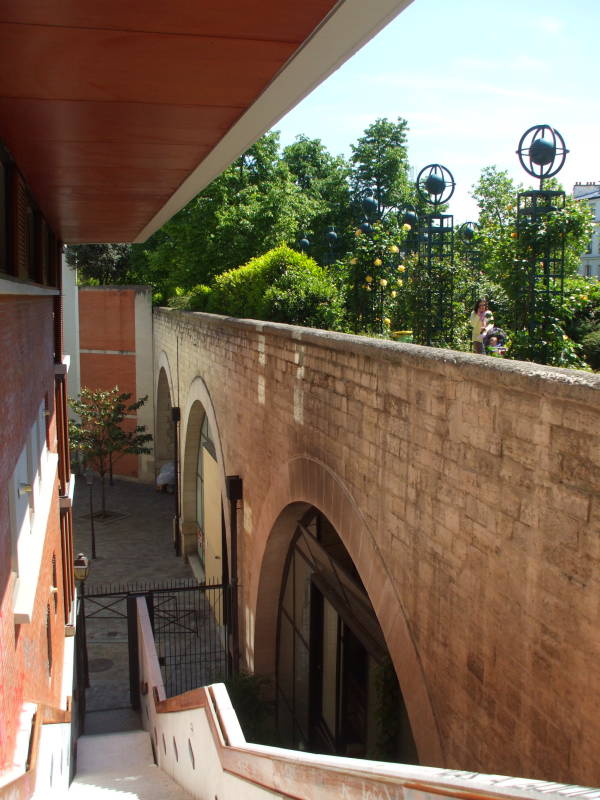

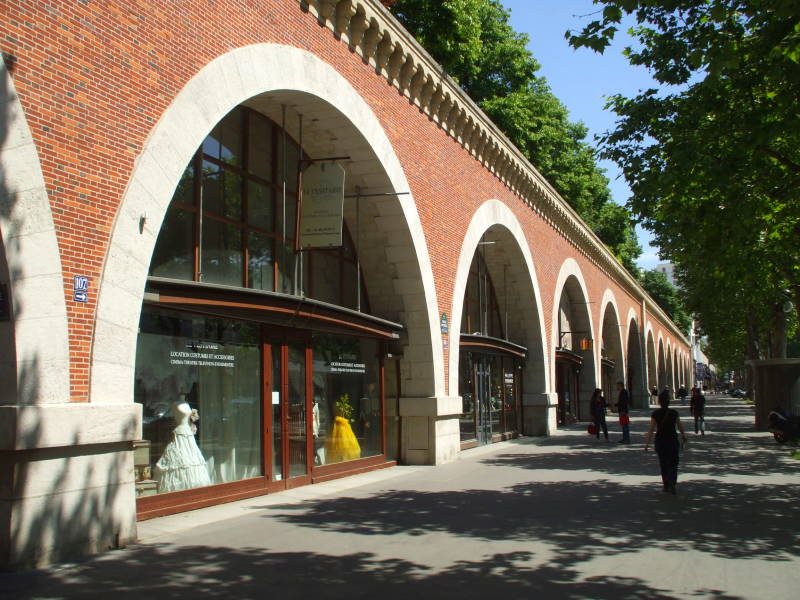
This section with brick arches has been renamed the Viaduc des Arts. This section runs parallel to Avenue Daumesnil. It was designed in 1988, and now hosts many art galleries and shops along the street level, within the arches.

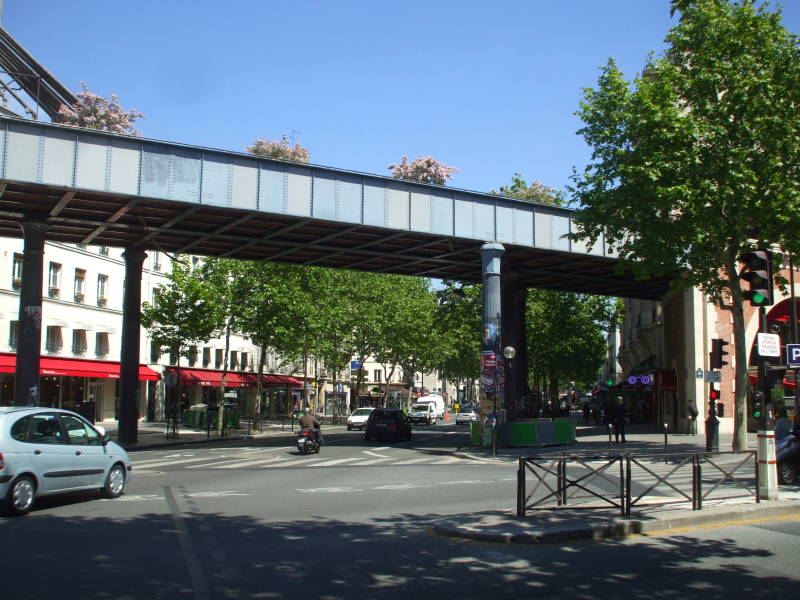
The Local Public School
This is the old Public School for Boys. It's still a school, now both boys and girls study here.

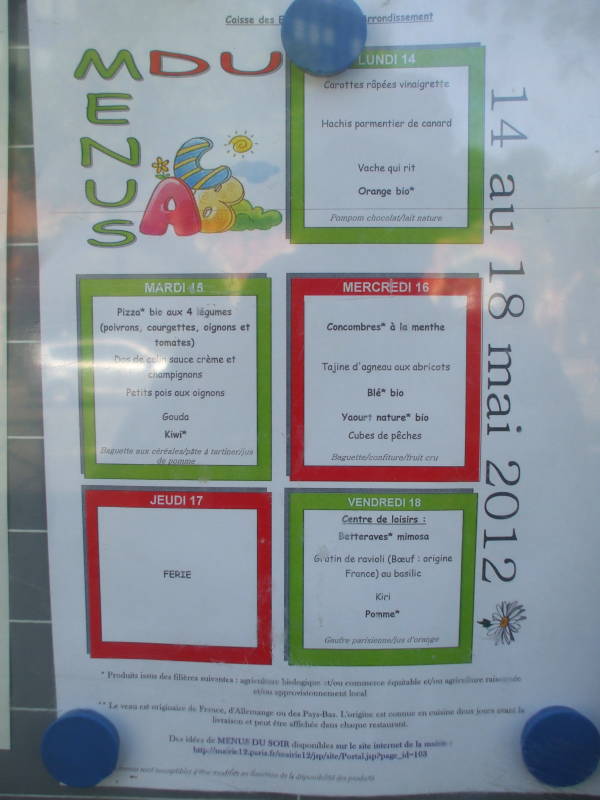
As required by French national law, the school's menu is posted outside.
Also as required by law, the meals provide variety and good nutrition. And, meals serve as educational and social opportunities.
Like so many schools in Paris, this one has a memorial to its students who were rounded up with the help of the Vichy government and sent to the German death camps.
Because they were born as Jews
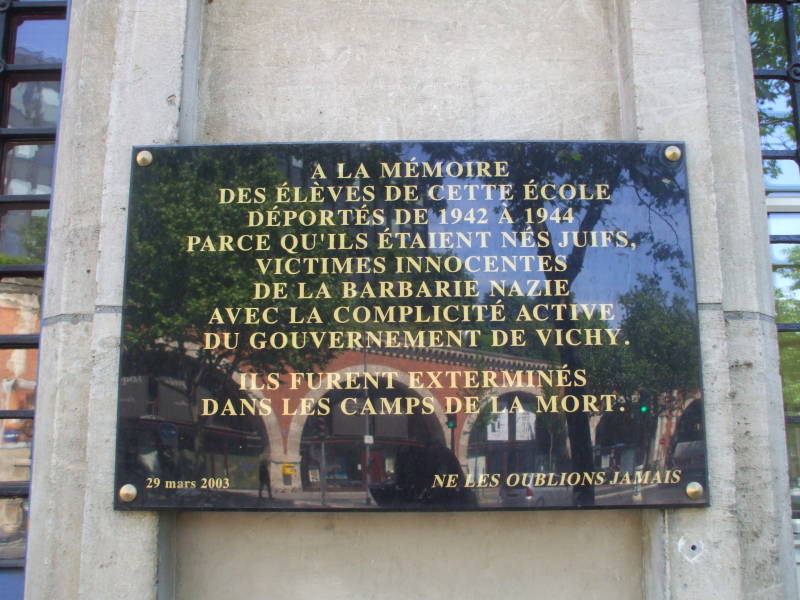
Back onto the Path
Canal Latéralà la Loire
Gare de Lyon is just two blocks south of here. It has non-TGV rail service south toward Briare, la Bourgogne or Burgundy, and the Canal Latéral à la Loire.
Meanwhile we're back up on the elevated parkway, where it doesn't seem like we're in the city at all.

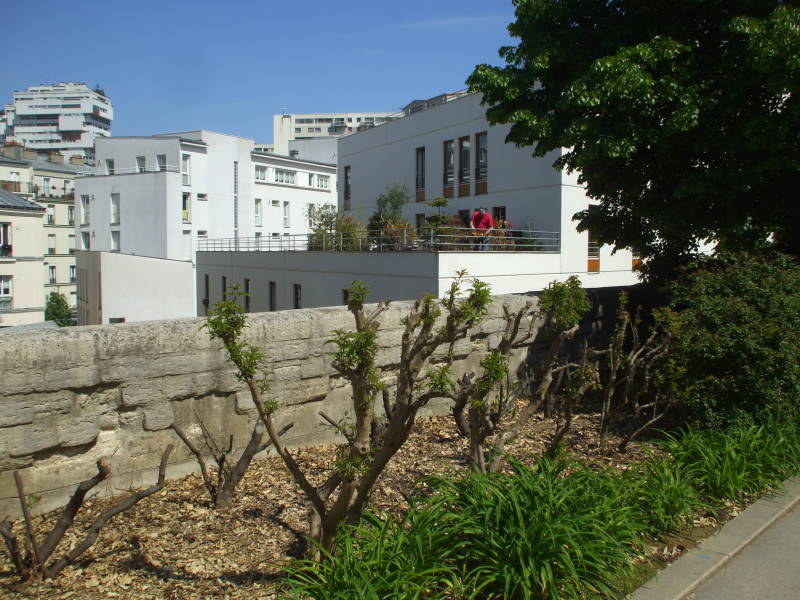
Above, someone is maintaining their own elevated garden.
Below, these buildings must have been built after 1969, when the rail line had already been shut down. Now the park squeezes through between them.



The old commercial rail depot of Reuilly was converted into a series of parks. The Coulée Verte passes through this former freight rail depot.
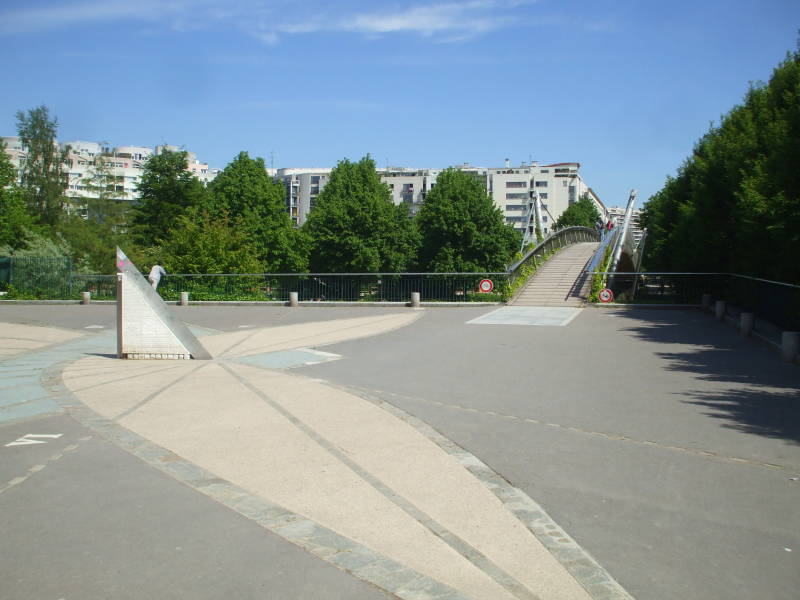
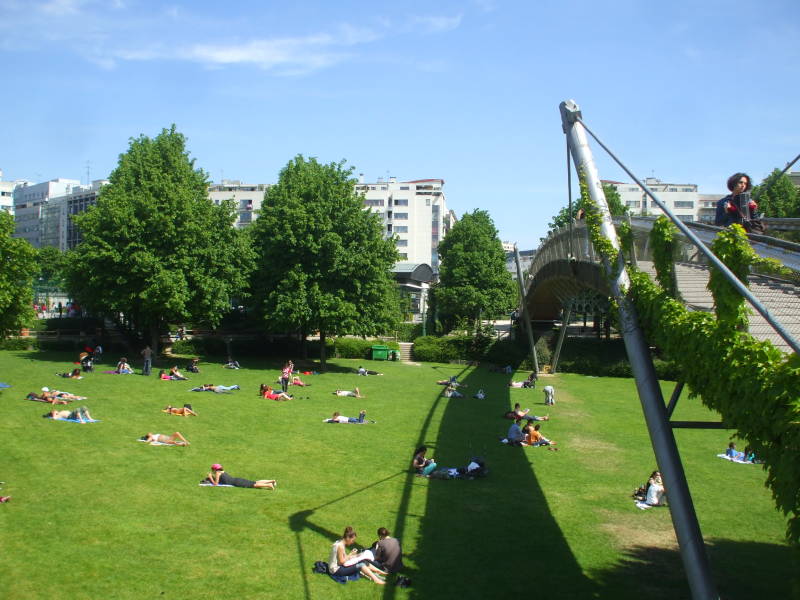
Down to Street Level
The parkway descends to street level as it passes through Jardin de Reuilly.
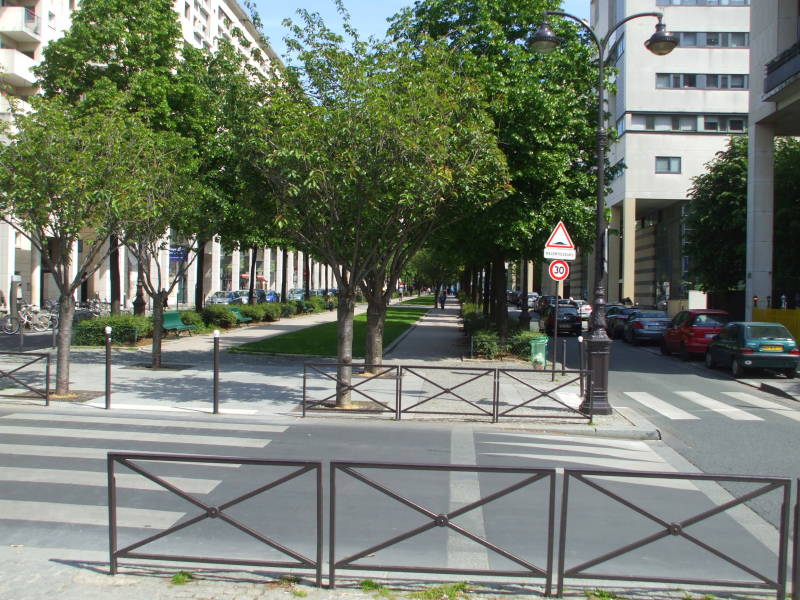

The parkway passes through a series of tunnels, still following the route of the old rail line.
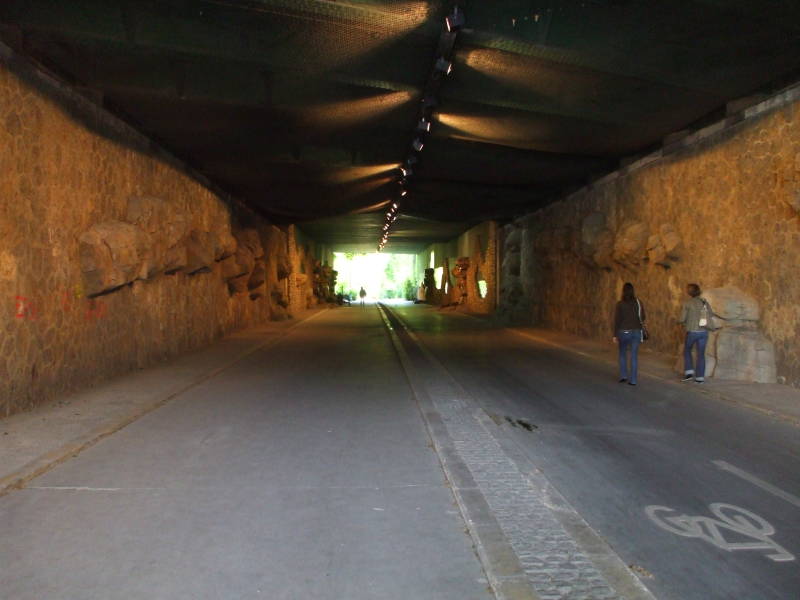

The parkway splits as it reaches the Rue du Sahel. One section follows a former branch line, the other continues to the ring road.
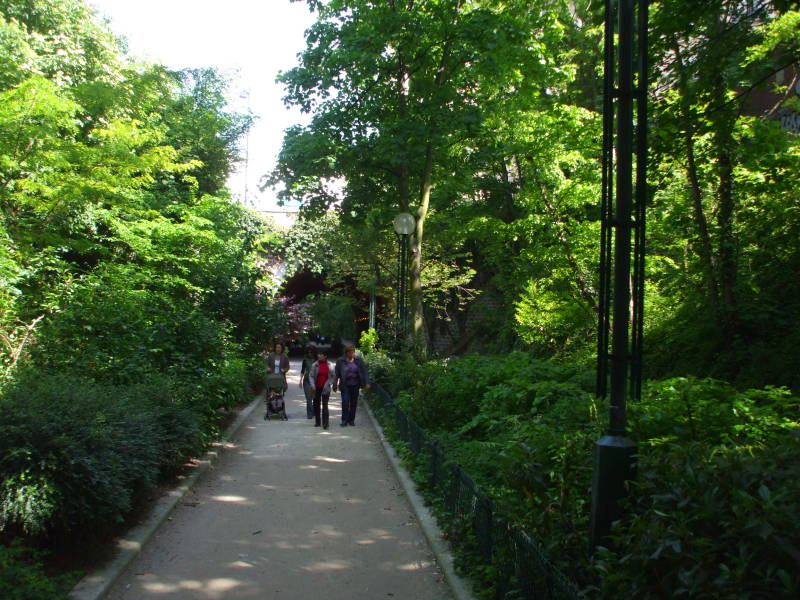

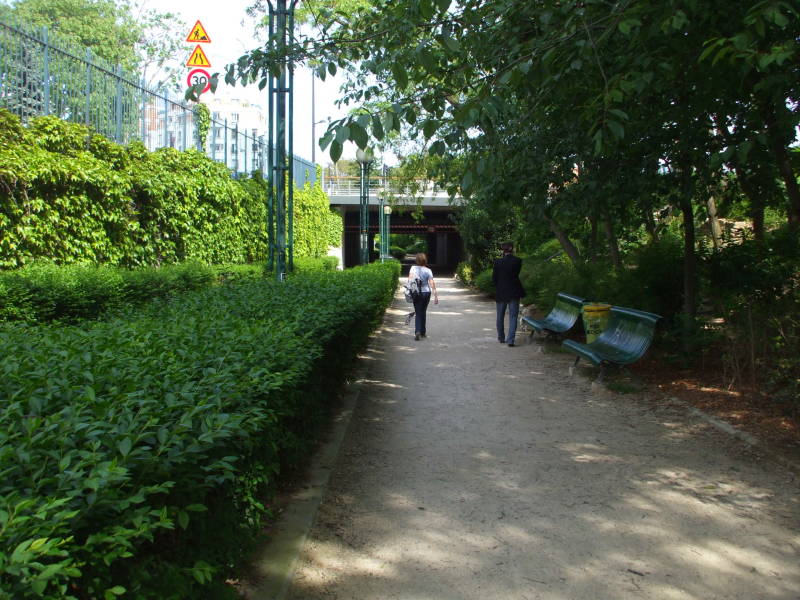
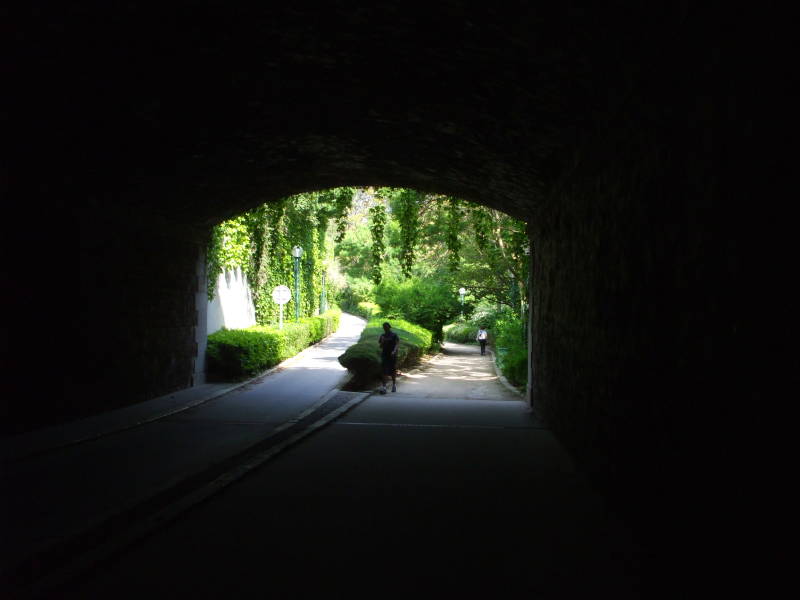
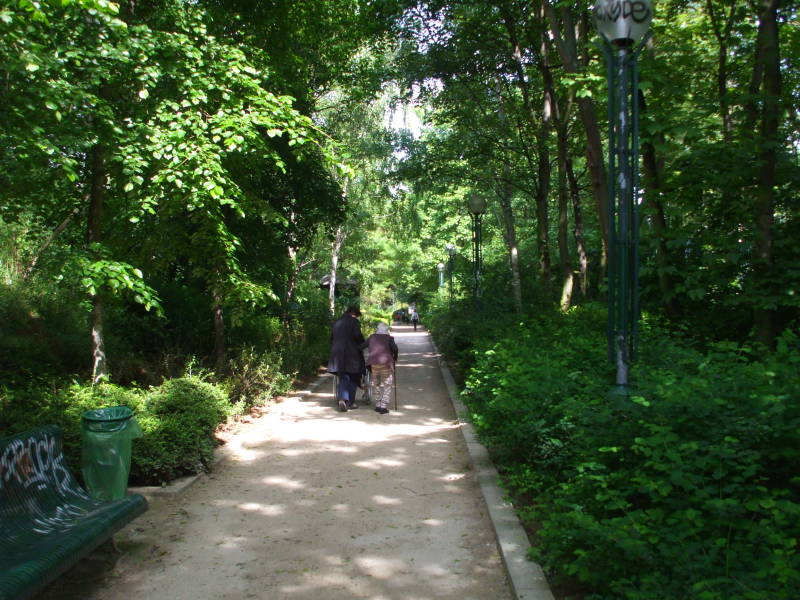
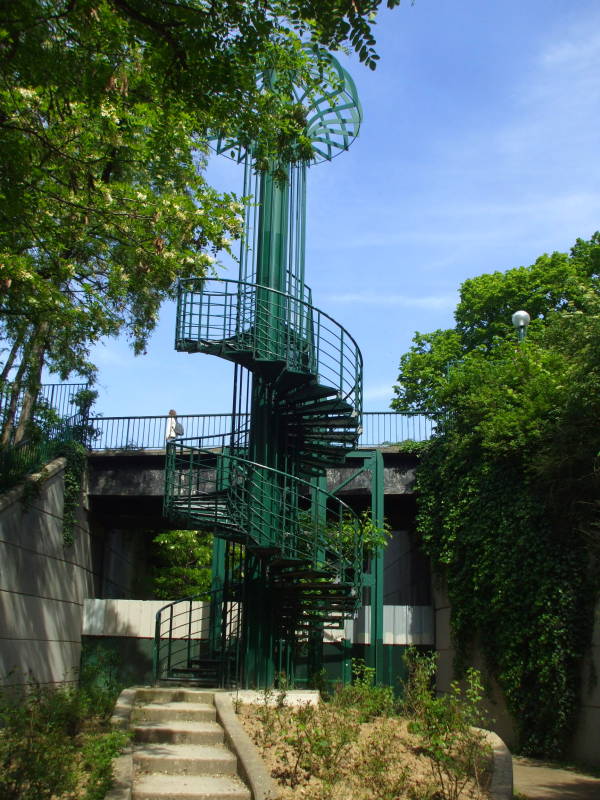
This spiral staircase marks the end of the main line of the Coulée Verte. At the top of it you're looking out onto Boulevard Périphérique, the inner ring road around Paris. This was the Montempoivre Gate through the city wall, part of the Thiers perimeter of the 1840s.
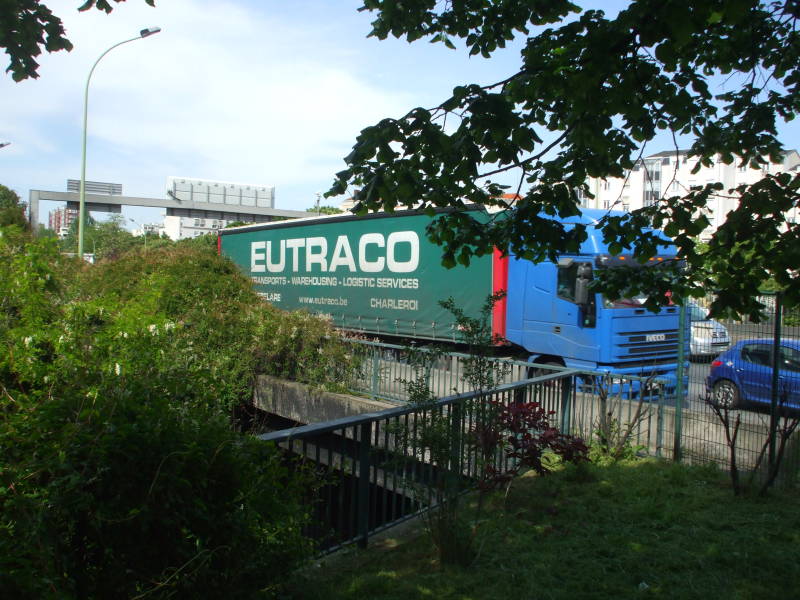
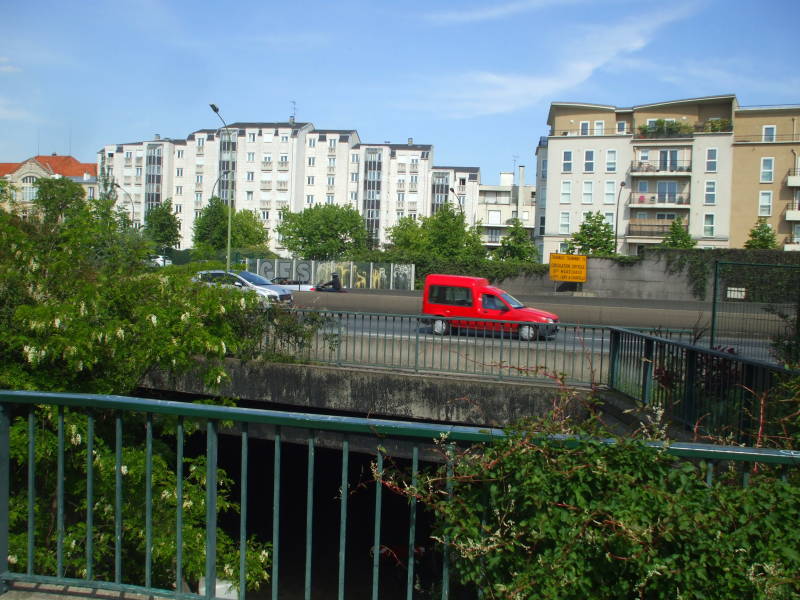
Other Elevated Railway Parks
The Coulée Verte was a unique city park for several years. Now other cities have followed this plan of converting abandoned elevated rail lines into narrow parks.
New York's High Line is the most prominent example. Its first section opened in 2009, and in 2014 its third section opened. It runs from the Meatpacking District north through Chelsea to the West Side Rail Yard at 34th Street, above the PATH and Amtrak lines leading under the Hudson River to New Jersey and on west and south. It's 2.33 kilometers long, built on what used to be the New York Central Railroad elevated line.
More recently, Chicago opened the Bloomingdale Line, a linear park on a 4.3 kilometer elevated rail line.